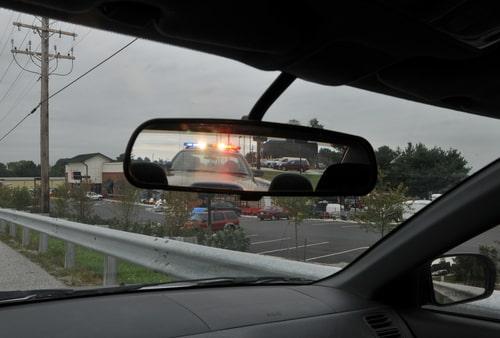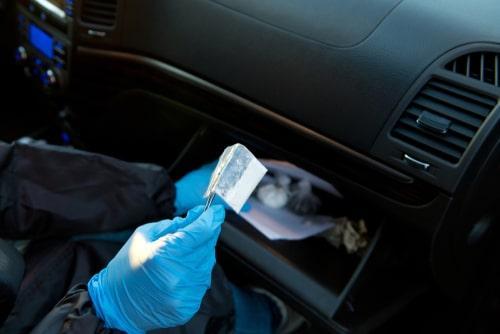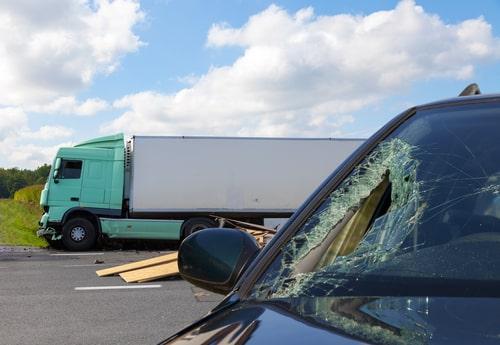Follow Us |Facebook
Call or Text for a Consultation
Recent Blog Posts
When Can I Be Charged with Forgery in Illinois?
 While forging a signature may be the most common and well-known form of forgery, the crime actually includes a wide variety of actions meant to defraud a person, business, or organization. In our digital world, new forms of forgery are increasingly possible, but the standard definition still provides a wide umbrella under which forgery can be charged. Under Illinois law, the crime of forgery is when an individual intends to defraud another person or institution, and then knowingly commits the prohibited act. This is further defined as making or altering a false document, presenting or possessing a false document, or unlawfully creating or using a digital signature, including a PIN.
While forging a signature may be the most common and well-known form of forgery, the crime actually includes a wide variety of actions meant to defraud a person, business, or organization. In our digital world, new forms of forgery are increasingly possible, but the standard definition still provides a wide umbrella under which forgery can be charged. Under Illinois law, the crime of forgery is when an individual intends to defraud another person or institution, and then knowingly commits the prohibited act. This is further defined as making or altering a false document, presenting or possessing a false document, or unlawfully creating or using a digital signature, including a PIN.
Common Types of Forgery
While methods may change from year to year, deceiving another party for financial gain remains against the law. Here are some of the most common types of forgery:
-
Counterfeiting – This is the most common type of forgery, including forging someone else’s signature. This can include on a check, a driver’s license, or other official documents.
What Are the Penalties for Arson in Illinois?
 In Illinois, you can be charged with arson if you used fire or explosives to damage someone else’s property or if you are suspected of intentionally damaging any building, including your own, with fire or explosives to commit insurance fraud. Depending on the circumstances of the case and the type of building that is alleged to be the target, you may be facing different varieties of arson charges. Make no mistake though, any arson charge is a serious one. You need to retain a criminal defense attorney who can aggressively fight the charges against you.
In Illinois, you can be charged with arson if you used fire or explosives to damage someone else’s property or if you are suspected of intentionally damaging any building, including your own, with fire or explosives to commit insurance fraud. Depending on the circumstances of the case and the type of building that is alleged to be the target, you may be facing different varieties of arson charges. Make no mistake though, any arson charge is a serious one. You need to retain a criminal defense attorney who can aggressively fight the charges against you.
Types of Arson in Illinois
Whether it started as a prank or something more sinister, arson charges are serious. To be charged with arson under the above definition, the property damage must be $150 or more. That means even minor fires can lead to major charges. Here are the types of arson under Illinois law:
-
A basic arson charge is a Class 2 felony, and you are facing three to seven years in prison and up to $25,000 in fines.
10 Reasons BAC Evidence May Be Inaccurate and Unreliable in a DUI Case
 In Illinois, the legal limit for blood alcohol content (BAC) is 0.08 percent. Police officers use many different means of determining a suspect’s level of intoxication. Field sobriety tests do not measure the exact level of intoxication, but they can be used to detect signs of intoxication like lack of coordination and balance. Chemical blood alcohol tests including breath tests and blood tests can be used to determine a person’s actual blood alcohol content after a drunk driving arrest. However, these tests are not always accurate or reliable. In some cases, evidence in a DUI case is inadmissible and must be thrown out.
In Illinois, the legal limit for blood alcohol content (BAC) is 0.08 percent. Police officers use many different means of determining a suspect’s level of intoxication. Field sobriety tests do not measure the exact level of intoxication, but they can be used to detect signs of intoxication like lack of coordination and balance. Chemical blood alcohol tests including breath tests and blood tests can be used to determine a person’s actual blood alcohol content after a drunk driving arrest. However, these tests are not always accurate or reliable. In some cases, evidence in a DUI case is inadmissible and must be thrown out.
Problems with DUI Evidence Can Make Them Unusable
Driving under the influence of alcohol is punishable by license revocation, steep fines, and even jail time in certain circumstances. However, the prosecution must have sufficient evidence to secure a conviction for DUI. Many different issues can make DUI evidence unreliable, including:
If the Police Found Illegal Drugs While I Was Riding in My Friend’s Car, Can I Go to Jail?
 Even though we now have a looser cannabis possession law in our state, Illinois drug laws in general are still very wide-ranging and severe. Just possessing over 30 grams of marijuana can still expose an adult to up to a year in jail and a $2,500 fine for a first offense (or more, depending on the amount possessed). For other controlled substances, like heroin, cocaine, or PCP, you may be looking at a Class 1 felony carrying several to many years in prison, and many thousands of dollars in fines.
Even though we now have a looser cannabis possession law in our state, Illinois drug laws in general are still very wide-ranging and severe. Just possessing over 30 grams of marijuana can still expose an adult to up to a year in jail and a $2,500 fine for a first offense (or more, depending on the amount possessed). For other controlled substances, like heroin, cocaine, or PCP, you may be looking at a Class 1 felony carrying several to many years in prison, and many thousands of dollars in fines.
One Big Question: What is “Possession”?
“Possession” is a broad and nebulous concept. On one hand, you do not have to literally, physically have the drugs on your person. Just having them in a car with yourself and other people can expose all of you to a charge of possession, as long as you knew or should have known that the drugs were there, and you had control over them. On the other hand, there are many factors to examine, and further questions to answer, to determine your possible culpability. First, did you know that the substance was in your friend’s car? Did you own or co-own the car? Did you have control over that space? Even if so, were you the only one who did? Was anyone else’s property found near the drugs? (And we are just getting started on the “possession” question. The State has a big burden of proof.)
How the Defense of Self-Defense Works in Illinois
 It sometimes happens that innocent people are arrested on suspicion of committing a violent crime when in reality, they were merely defending themselves. This is disturbingly common in domestic violence cases, where the victim is mistaken for the primary aggressor and arrested. It can also happen after a fight in which one person initiated an attack and the victim capably defended himself. This has even been known to happen in murder cases. If you had to defend yourself against someone who became a physical threat to you and were arrested, it is important to contact an attorney as soon as possible. You may have a valid self-defense case that could get your case dismissed or get you acquitted at trial.
It sometimes happens that innocent people are arrested on suspicion of committing a violent crime when in reality, they were merely defending themselves. This is disturbingly common in domestic violence cases, where the victim is mistaken for the primary aggressor and arrested. It can also happen after a fight in which one person initiated an attack and the victim capably defended himself. This has even been known to happen in murder cases. If you had to defend yourself against someone who became a physical threat to you and were arrested, it is important to contact an attorney as soon as possible. You may have a valid self-defense case that could get your case dismissed or get you acquitted at trial.
When Can a Person Use Force in Self-Defense?
There are a few conditions that must be met before you are entitled to use force in self-defense. In Illinois, they are:
-
Danger - There was an imminent danger to you or another person. In some cases, a threat to your property will suffice.
Is it Illegal to Stop a Person From Reporting Domestic Violence?
 Assaulting a family or household member, or a current or past romantic partner is obviously a crime. This type of assault is considered domestic violence, and it can lead to jail time - which you hopefully already knew. What you may not know is that sometimes, simply stopping a person from reporting or seeking help for domestic violence can also be a crime under the right circumstances. This law is somewhat unique to Illinois - not many states have a statute like this on the books. If you are facing charges for domestic violence or interfering with its reporting, you will need to speak to an attorney as soon as possible. The consequences of these crimes can be serious.
Assaulting a family or household member, or a current or past romantic partner is obviously a crime. This type of assault is considered domestic violence, and it can lead to jail time - which you hopefully already knew. What you may not know is that sometimes, simply stopping a person from reporting or seeking help for domestic violence can also be a crime under the right circumstances. This law is somewhat unique to Illinois - not many states have a statute like this on the books. If you are facing charges for domestic violence or interfering with its reporting, you will need to speak to an attorney as soon as possible. The consequences of these crimes can be serious.
When is it Illegal to Stop a Report of Domestic Violence?
The first, and perhaps most important, thing you should know about this crime is that it is only illegal to stop this type of report if you are the one who committed an act of domestic violence. If you are not the perpetrator of domestic violence, then you cannot be charged with this specific crime. However, you could face other charges for preventing a victim of domestic violence from seeking help depending on how you go about it.
What Happens if I Violate My Illinois Probation?
 When you have been convicted of or pled guilty to a crime, getting probation instead of jail time can feel like a dream come true. Reporting to a probation officer and following a set of rules is highly preferable to incarceration for most people. However, the rules of probation can be difficult to abide by. There are nearly endless ways for a probationer to end up violating these terms without necessarily meaning to. Those who are in addiction recovery are often at a higher risk for probation violations should they happen to relapse.
When you have been convicted of or pled guilty to a crime, getting probation instead of jail time can feel like a dream come true. Reporting to a probation officer and following a set of rules is highly preferable to incarceration for most people. However, the rules of probation can be difficult to abide by. There are nearly endless ways for a probationer to end up violating these terms without necessarily meaning to. Those who are in addiction recovery are often at a higher risk for probation violations should they happen to relapse.
Probation can be a very strict and unforgiving program, and the consequences of a violation can be serious. Jail time is often back on the table. If you learn that you are being accused of a probation violation, you have the right to be represented by your attorney at the hearing. It is important that you exercise this right to give you the best chance of avoiding further, deeper legal troubles.
What Does "Kidnapping" Actually Mean in Illinois?
 When you hear the term “kidnapping,” you may picture the stereotypical scenario of someone driving up in a windowless van and snatching a child from the side of the road. However, the actual legal definition of kidnapping is much broader. The victim need not be a child, and you need not move them from the location where you found them. Kidnapping can also be carried out through nonviolent means. Many people who find themselves being charged with this felony are taken by surprise at the charge due to a series of common misconceptions about what kidnapping actually means.
When you hear the term “kidnapping,” you may picture the stereotypical scenario of someone driving up in a windowless van and snatching a child from the side of the road. However, the actual legal definition of kidnapping is much broader. The victim need not be a child, and you need not move them from the location where you found them. Kidnapping can also be carried out through nonviolent means. Many people who find themselves being charged with this felony are taken by surprise at the charge due to a series of common misconceptions about what kidnapping actually means.
If you are facing this charge, you are in great legal jeopardy. Kidnapping, without aggravating circumstances, is a second-degree felony in Illinois, punishable by three to seven years in prison.
What is the Legal Meaning of Kidnapping?
Legally, kidnapping refers primarily to confining a person against their will. It is the confinement itself that results in the kidnapping charge. It is a misconception that kidnapping necessarily involves transporting the victim from one place to another by force. The offense of kidnapping can involve:
What Are Punitive Damages?
 When car accidents or truck accidents are caused by ordinary carelessness, it is usually seen as enough for the at-fault party to compensate the victim for any harm done. This usually includes paying for medical expenses, lost wages, and other costs directly related to the accident. However, sometimes an at-fault party’s conduct goes above and beyond mere negligence. In specific cases where a driver’s behavior was more egregious, punitive damages may be awarded for the purpose of punishing the defendant. This area of the law can be complicated, so you will need an attorney to assess the facts and circumstances of your accident to determine whether punitive damages may be appropriate.
When car accidents or truck accidents are caused by ordinary carelessness, it is usually seen as enough for the at-fault party to compensate the victim for any harm done. This usually includes paying for medical expenses, lost wages, and other costs directly related to the accident. However, sometimes an at-fault party’s conduct goes above and beyond mere negligence. In specific cases where a driver’s behavior was more egregious, punitive damages may be awarded for the purpose of punishing the defendant. This area of the law can be complicated, so you will need an attorney to assess the facts and circumstances of your accident to determine whether punitive damages may be appropriate.
What is the Difference Between Punitive and Compensatory Damages?
Compensatory damages are meant to compensate injured plaintiffs for the damage done to them in the accident. Even if it was simply a careless mistake, compensatory damages are awarded so that the defendant, rather than the plaintiff, will cover the costs associated with the crash. Punitive damages are used to punish the defendant for hurting someone through a complete disregard for others’ safety.
Who Can File a Wrongful Death Claim in Illinois?
 Losing a loved one because of another person’s negligence is devastating. A fatal accident can bring both emotional and financial stress to an entire family that can be long-lasting. If your family member was killed due to negligence, you may be rightfully seeking to recover damages. The first step to put your family on the path to receiving compensation is determining who has standing to file the claim. If you are interested in pursuing a wrongful death claim, it is important that you consult with a qualified wrongful death lawyer. Your family deserves compensation for their loss - an experienced attorney can advocate for you to receive everything you are entitled to.
Losing a loved one because of another person’s negligence is devastating. A fatal accident can bring both emotional and financial stress to an entire family that can be long-lasting. If your family member was killed due to negligence, you may be rightfully seeking to recover damages. The first step to put your family on the path to receiving compensation is determining who has standing to file the claim. If you are interested in pursuing a wrongful death claim, it is important that you consult with a qualified wrongful death lawyer. Your family deserves compensation for their loss - an experienced attorney can advocate for you to receive everything you are entitled to.
Who Has Standing to Bring a Wrongful Death Action in Illinois?
In Illinois, wrongful death actions must be brought by the “personal representative” of the deceased. The personal representative is the estate administrator or executor of the person who passed away. If your deceased family member had a will or other estate planning documents, they probably appointed a personal representative.




